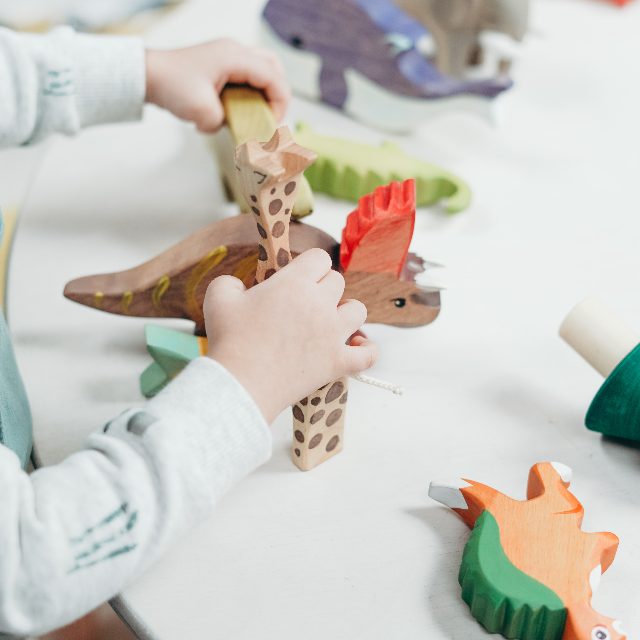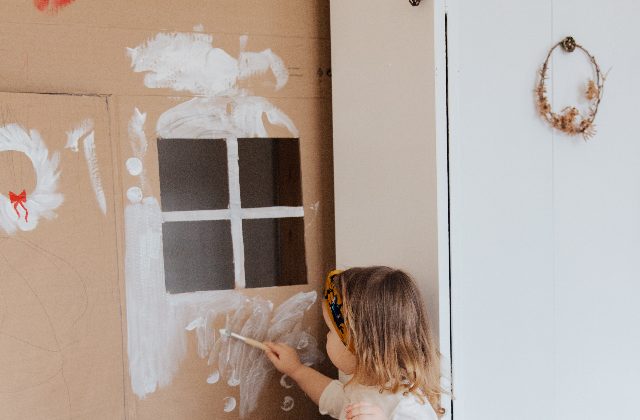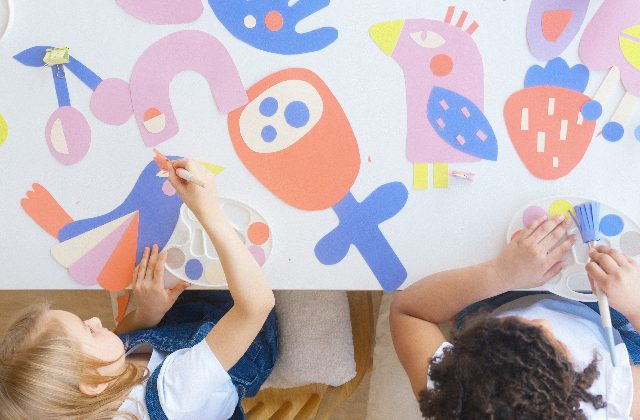
When is Impulse Control Fully Developed? Impulse control can be difficult for many children, even though it is normal for their developmental stage. However, it is a crucial ability that may be developed and enhanced at any age. This is significant since many behavioral issues are caused by a lack of impulse control. Without effective intervention, impulsive habits have a tendency to normalize, become ingrained, and deteriorate with time.
Therefore, having children that are so impulsive is one of the most upsetting aspects of parenting. Despite your warnings, they continue to act and speak without thinking; Instead of pausing to ask for the toy, they simply take it. However, that is exactly what they must do. Even though it’s challenging for adults, kids are supposed to be impulsive. Our expectations are frequently higher than what kids can do, which is where the dissatisfaction comes from. But, when is impulse control fully developed? Learn more about impulse control in children and ways you can assist your child in developing better impulse control as they get older in this guide.
What Is Impulse Control?

When is Impulse Control Fully Developed? The capacity of a child to manage their conduct is referred to as impulse control, also known as self-regulation.
It is common for young kids to exhibit a range of intense emotions, including enthusiasm, joy, rage, frustration, and disappointment.
Learning how to express emotions in suitable situations and proper ways is a crucial component of maturing.
Children who learn to control their annoyance or anger and who communicate their emotions verbally get along well with others.
Children’s behavior issues are frequently brought on by poor impulse control and an inability to regulate one’s anger, which also makes it difficult for kids to make friends in school.
When Is Impulse Control Fully Developed?

Why do kids have poor self-control at such a young age?
Children under the age of three lack adequate development in the area of the brain that regulates the emotional and impulsive parts of the brain.
It takes kids until they are 3.5 to 4 years old before they genuinely start to exhibit this kind of self-control, and even then, they still require a lot of assistance in controlling their emotions and impulses.
Given the high number of verbally gifted 2-year-olds who can repeat many of the rules their parents have established, it is not surprising that so many parents have high expectations.
However, It could make you feel frustrated because a rule or instructions can be repeated, but that does not mean that your child can follow it.
When your expectations are reasonable in line with our child’s abilities, life with your child will be much less frustrating.
It can be reassuring to realize that your child is acting appropriately for his age, that he needs assistance in learning impulse control, and that, despite how it may feel, he is not intentionally misbehaving or trying to drive you crazy.
Teaching Your Child How To Develop Impulse Control
1. Recognize Your Toddler’s Emotion
Toddlers need to do several things that they don’t want to, like sharing, putting down their toys to take a nap when they’re not sleepy, or getting in the car seat.
Therefore, it’s necessary to understand your toddler’s emotions to be able to teach him impulse control.
Say something like, “You are unhappy that we can’t go get ice cream today. Please know that I understand.”
Giving your child the vocabulary to express his emotions is the first step in assisting him in controlling his emotions and gaining self-control.
2. Labeling Emotions
Impulsivity is more prevalent among kids who don’t understand or know how to express their emotions well.
A child who is unable to express their anger verbally may hit his peer to do so. Or a child who is unable to express verbally, “I feel sad,” may scream and fall to the ground.
Teach your child to identify their emotions so they can express themselves to you verbally rather than physically. Start by showing your child the names of common emotions, such as anger, sadness, and excitement.
Next, discuss the difference between feelings and behavior.
Make sure your child understands that while feeling angry is acceptable, hitting, kicking, or yelling at others while angry is not.
They will be more likely to feel heard and supported—and less likely to feel the urge to act out—when they can express their emotions in meaningful conversation.
In other words, merely identifying the feeling that is overwhelming you or your child will stop the emotional roller coaster and start the process of helping your child think more clearly and come up with a solution.
Although you don’t have to name the emotion right away, you should discuss it frequently, read books about it, use illustrations, and offer support.
In this manner, kids will be more likely to communicate their feelings to you and control their impulses.
3. Make Directions Clear
Children who have trouble controlling their impulses are quickly distracted as they attempt to take in everything around them. Giving your child instructions with several details isn’t helping him in any way.
For example, Telling him to “go get the hairbrush, put his lunch in his bag, and pick up his clothes on the floor” might be too much for him to process.
Ensure simplicity.
It can be helpful to have him repeat what you said to ensure that he understands it, or you can even put routine activities on show as visual reminders to keep him focused.
4. Set up Household Rules
Make obvious rules and provide justifications for your rules.
By giving your child structure and expectations, you can help him better manage his impulses because he will know what is expected of him.
According to the study, children tend to thrive with the regularity and structure provided by family norms.
Be clear about your expectations before letting your child try something new. He’ll be less inclined to misbehave after he realizes that it’s appropriate to speak in an indoor voice in the library or to walk in the grocery store instead of running.
Additionally, be sure to beforehand describe the negative consequences of disobeying the rules. He will then be able to decide on his behavior with more knowledge.
5. Make a Reward System
You might be wondering when is impulse control fully developed in children and how you could assist your child in developing impulse control.
The use of a reward system is an effective method for helping your child develop impulse control.
Children must have the chance to practice delayed gratification.
Making a reward system will make delaying gratification enjoyable. This can be done in a fun way using a token economy system.
Give your child rewards for their good behavior. After that, let them trade their tokens for greater benefits like trips to the park.
Create large rewards that require 20 tokens as well as modest rewards that simply demand one or two tokens.
Encourage your kid to save their tokens later on for more expensive activities like going to the cinema.
They will learn how to wait by saving up for higher rewards, which is a crucial ability that will help them fend off temptations that can prompt rash decisions.
Also, by observing you, your child will pick up a lot about impulse control. Set a good example of how to wait patiently and accept delayed gratification.
Using phrases like “I’d like to buy that new laptop but I’m going to save my money for our vacation next summer” may help you draw attention to the impulse control strategies you’re employing.
Your child will learn how to create an internal conversation that will help him control his impulses by listening to you talk to yourself aloud.
6. Instill Problem-Solving Techniques
Thoughtful problem-solving can be one of the most effective impulse control techniques, despite how simple it may seem.
Teach your child that there are various approaches to problem-solving and that it is wise to consider various options before making a decision.
So, whether your child is attempting to work out a math issue or fix the chain on his bicycle, encourage him to come up with at least five different solutions before making a decision.
Help him determine which potential solutions are most likely to be successful after helping him find potential solutions. He can learn to think things through before acting with some practice.
7. Promote Physical Exercise
Make sure your child gets lots of exercise by encouraging him to play outside. A child who has had the chance to climb, jump, and run will be more equipped to be self-disciplined.
Don’t let your kids spend too much time on electronics, and whenever you can, get your child physically active. Attempt to find chances for you and your child to engage in outdoor activities.
It will help him focus his energies on constructive activities rather than impulsive ones.
8. Instill Techniques for Managing Anger
Impulsive outbursts could be a sign of low frustration tolerance. A healthy method for your child to handle his emotions is by teaching him how to control his anger.
Demonstrate to your child a particular anger management technique, such as taking a few calm breaths or walking around the home to burn off some energy. Even better, assemble a package of relaxation aids for him in a calm-down situation.
It’s preferable to instruct your child on how to control his emotions, make better decisions, or put him in a safe environment.
9. Practice Mindfulness
Being mindful is returning to the present, paying attention to your perceptions, thoughts, and emotions there, and not allowing your thoughts to wander.
Neurological networks that support concentration and cognitive control are strengthened by mindfulness. The prefrontal cortex of the brain is where these abilities are accessed.
The prefrontal cortex develops mainly during early childhood and adolescence.
Children are creating pathways for enhanced focus, control, and emotional regulation that will last throughout their lives by engaging in mindfulness practices at these critical developmental times.
There are numerous ways to practice mindfulness. Encourage your child to connect to his senses, slow down his breathing, and identify what he hears, sees, smells, feels, and tastes.
You may also just blow bubbles slowly and observe the colors that emerge.
As your child does this, become aware of how his body feels. If he accomplishes something when he is calmly disposed, he will probably be able to do it when he is anxious.
10. Establish Appropriate Limits With Natural Consequences
Beyond knowing when is impulse control fully developed in children comes the crucial need to set expectations for your child even if he isn’t yet able to follow them.
The goal is to employ a teaching and guiding strategy with obvious and appropriate consequences.
Explain the rule calmly “No throwing toys.” “If you throw your toys, I will hide them for five minutes.”
It is normal for your child to test the boundary and, therefore calmly enforce the punishment.
Children create the neural connections necessary to achieve the ability of self-control through regular encounters like these.
11. Impulse Control Games
The development of impulse control is greatly aided by activities for kids that demand listening, following directions, and pausing.
Children must pay attention to what is happening and react when playing games like following the leader or statues. These enjoyable games genuinely promote impulse control abilities.
There are several activities you may engage in throughout the day to support your child in learning impulse control.
But it’s crucial to keep in mind that your child is evolving and growing. He simply lack the necessary skills, thus you cannot expect him to apply them immediately without guardiance.
For instance, if you are playing outside and your child sees you, he will run to you until you put up the red sign. When the sign is green, he starts running once more.
Play the “Freeze Dance” song.
Your child dances when the music is playing; when you turn it off, he must freeze. Discuss how to handle these strong emotions while reading books about kids who become upset or throw tantrums.
Take advantage of your child’s pretend play to impart self-control. Consider how “Mr. Bear” could respond if a stuffed animal lashes out or does something that isn’t appropriate.
Conclusion
It’s normal for young children to have impulsive physical behavior. One of the most prevalent impulse control issues is hitting, jumping off furniture, or running through the grocery store.
Therefore, when is impulse control fully developed?
The capacity to control impulses will come more naturally to some kids than others.
There are kids who struggle with impulse control due to neuro divergences like Attention Deficit/Hyperactivity Disorder (ADHD) or other conditions.
The capacity of your child to control impulsive conduct may be hampered by underlying illnesses like ADHD, but therapy can be very beneficial.
Although there are things you can do to aid in the development of impulse control, some kids will still require specialized support in this area.
However, impulse control should get better with time with repetition and persistent discipline.
If your child seems to be having more difficulty than other kids their age or if you have worries about your child’s capacity to make good decisions, speak to his pediatrician.
Leave a Reply
You must be logged in to post a comment.